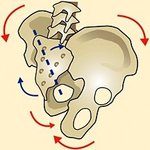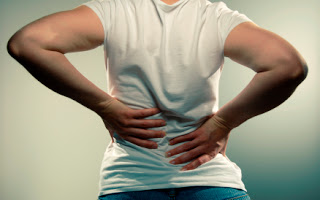Mechanical leverage – the cause of lower back pain and other problems with the way we walk.
One of the most pervasive and frustrating conditions is lower back pain. Poorly understood by most health care practitioners, it is a common complaint that is rarely addressed appropriately. Millions of people have the experience of perhaps bending over and not being able to get up. They visit their doctor, who may recommend a number of different therapies, pills and if the problem has gone on long enough, may even opt for surgery which is occasionally necessary as the back problem morphs into disc problems.
This is incredibly frustrating for the patient, for the employer (injuries at work and employee down time) yet, the healthcare system seems oblivious as to why this occurs. The answers are in the medical literature and on the internet, but you are not going to see it by visiting wikipedia or one of the many web sites devoted to orthodox treatments for back pain such as the Mayo Clinics web site.
Chiropractors, historically, get this more right, most of the time but they too, look at the lower back as the problem, rather than where did it originate from . As healthcare practitioners, we all learn the same type of medical diagnosis to diagnosis the condition, rather than the mechanism of the condition.
 Back problems is a problem of leverage, or mechanical advantage, and how it reacts against gravity. The reason is simple! People who are of a more asymmetrical build experience the most problems with their back. It is due to body style, which is inherited and passed on from generation to generation. If you are built with feet that flare out, with one side turning out more than the other, the body will compensate in the core muscles (those in the mid back), the myofascia will lock it in place so the pelvis torques. The right and the left side of the body will work differently. If the right side of the body from foot flare fires the muscles in the lower back more, and the left side fires the muscles in the front more, it will torque the pelvis. Over time, this will strain the joints and create poor balance. This also creates a loss of stability which is created by the core, which is where we develop leverage for upper and lower body movement. When this is severely compromised, like when your severely hurt your back, you have difficulty getting up. The secondary effect is overstriding and understriding, as the legs and hip flexors become tighter because they do more work in the gait cycle. Over time, this causes more movement than is normal through the discs and eventually, disc herniations occur, as well as other degenerative processes. Secondly, the upper back becomes involved, shoulder joints are restricted and shoulder and neck problems and headaches may occur.
Back problems is a problem of leverage, or mechanical advantage, and how it reacts against gravity. The reason is simple! People who are of a more asymmetrical build experience the most problems with their back. It is due to body style, which is inherited and passed on from generation to generation. If you are built with feet that flare out, with one side turning out more than the other, the body will compensate in the core muscles (those in the mid back), the myofascia will lock it in place so the pelvis torques. The right and the left side of the body will work differently. If the right side of the body from foot flare fires the muscles in the lower back more, and the left side fires the muscles in the front more, it will torque the pelvis. Over time, this will strain the joints and create poor balance. This also creates a loss of stability which is created by the core, which is where we develop leverage for upper and lower body movement. When this is severely compromised, like when your severely hurt your back, you have difficulty getting up. The secondary effect is overstriding and understriding, as the legs and hip flexors become tighter because they do more work in the gait cycle. Over time, this causes more movement than is normal through the discs and eventually, disc herniations occur, as well as other degenerative processes. Secondly, the upper back becomes involved, shoulder joints are restricted and shoulder and neck problems and headaches may occur.
This is why I say this a problem with gravity. The worse it gets, the more unstable you are and the more likely you will hurt your lower back doing the simplest of activities. While most people use pain avoidance (stay away from what hurts you), a better approach is to understand what this is and to use your knowledge of you to get better care for the condition. I see many people going to pilates for this even though they do not know that you cannot train a torqued core. They feel good as long as they keep going. This breeds dependence and there is a better way.
How to resolve back problems.
1. identify why it exists.
2. Find out if you would benefit from foot orthotics – most people who are built asymmetrically can since it cheats mother nature (the way you are built)
 3. find someone who specializes in myofascial release and spinal manipulation (most chiropractors do one or both). Many of these providers also use active evaluation and treatment, a trend that sets them apart diagnostically and results wise from most others who still rely on the older methods of static evaluation.
3. find someone who specializes in myofascial release and spinal manipulation (most chiropractors do one or both). Many of these providers also use active evaluation and treatment, a trend that sets them apart diagnostically and results wise from most others who still rely on the older methods of static evaluation.
4. Do exercises after the area becomes trainable, and you can walk around with greater stability, less pain and improved flexibility. Trying to exercise a torqued core is a lesson in futility and is trying to put the cart before the horse
Let me know what you think. If you want to know more, you can read my new book, available on Amazon September 2011 called Cheating Mother Nature, What you need to know to beat chronic pain.
